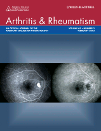Quantitative imaging of murine osteoarthritic cartilage by phase-contrast micro–computed tomography
Abstract
Objective
The mouse is an optimal model organism in which gene–environment interactions can be used to study the pathogenesis of osteoarthritis (OA). The gold standard for arthritis research in mice is based on histopathology and immunohistochemistry, which are labor-intensive, prone to sampling bias and technical variability, and limited in throughput. The aim of this study was to develop a new technique that assesses mouse cartilage by integrating quantitative volumetric imaging techniques.
Methods
A novel mouse model of OA was generated by cruciate ligament transection (CLT) and evaluated by histopathology and immunohistochemistry. Knee joint specimens were then imaged using a new technique that combines high-resolution micro–computed tomography (micro-CT) and phase-contrast optics followed by quantitative analyses. A comparative analysis was also performed in a previously established mouse model of OA generated by destabilization of the medial meniscus (DMM).
Results
Phase-contrast micro-CT achieved cellular resolution of chondrocytes and quantitative assessment of parameters such as articular cartilage volume and surface area. In mouse models of OA generated by either CLT or DMM, we showed that phase-contrast micro-CT distinguished control and OA cartilage by providing quantitative measures with high reproducibility and minimal variability. Features of OA at the cellular or tissue level could also be observed in images generated by phase-contrast micro-CT.
Conclusion
We established an imaging technology that comprehensively assessed and quantified the 2-dimensional and 3-dimensional changes of articular cartilage. Application of this technology will facilitate the rapid and high-throughput assessment of genetic and therapeutic models of OA in mice.




